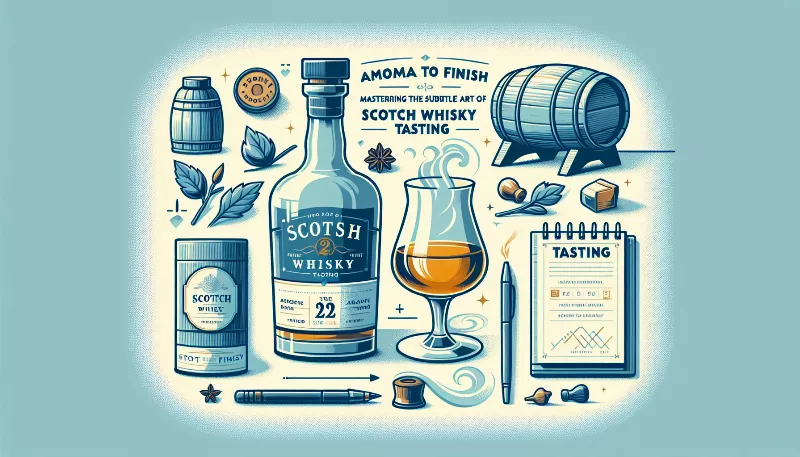How should one properly taste and evaluate the different types of Scotch whisky?
Discover the art of Scotch tasting! Learn to savor & assess like a pro with our expert tips on evaluating whisky flavors, aromas, and finishes.

Embark on a Sensory Journey
Scotch whisky, a timeless spirit steeped in tradition and complexity, offers a sensory journey like no other. To truly appreciate its depth and variety, one must approach tasting with both reverence and enthusiasm. Whether you're a seasoned aficionado or a curious newcomer, understanding how to properly taste and evaluate Scotch whisky can transform your experience from mere drinking to an art form.
Setting the Stage for Tasting
Before diving into the nuances of Scotch, it's essential to create the right environment. Choose a quiet space free from overpowering smells or distractions. A proper tasting glass, such as a Glencairn, tulip-shaped glass, or a snifter, will concentrate the aromas and enhance your ability to evaluate the whisky. Ensure your palate is clean, and if possible, have some still water on hand to cleanse your palate between tastings or to add a few drops to the whisky itself.
Visual Examination: The First Impression
Begin by observing the whisky's color, which can range from pale straw to deep amber. The hue can give you clues about the age and types of casks used during maturation. Swirl the whisky gently in the glass; the way it clings to the sides, forming 'legs' or 'tears,' can indicate body and alcohol content.
Nosing: Unlocking the Aroma
Nosing is where the magic starts to unfold. Bring the glass to your nose and take a gentle sniff. Allow the layers of scent to reveal themselves. You might detect notes of fruit, nuts, peat, wood, or sea air, depending on the Scotch's region and production methods. Take your time with this step—much of what you'll taste is actually what you smell.
The First Sip: Tasting with Purpose
Take a small sip and let the whisky coat your tongue. Resist the urge to swallow immediately. Instead, chew the liquid slightly to expose all areas of your palate to its flavors. Try to identify the primary taste profiles: sweet, salty, sour, bitter, and umami. Note the texture—is it creamy, oily, or perhaps silky?
The Finish: A Lasting Impression
As you finally swallow, pay attention to the finish. This is the aftertaste that lingers in your mouth. A long, complex finish is often the hallmark of a high-quality Scotch. Reflect on the balance of flavors and how they evolve over time. Does the finish leave you with a warm sensation, or is it more mellow and cooling?
Comparing and Contrasting
If you're tasting multiple Scotches, take notes on each one. Compare and contrast them, looking for differences in flavor, body, and finish. This will help you understand your preferences and recognize the unique characteristics of each type of Scotch whisky.
Final Thoughts
Remember, tasting Scotch whisky is a personal experience. There are no right or wrong answers, only what resonates with your palate. Embrace the journey, and let each dram tell its own story. Slàinte mhath!










